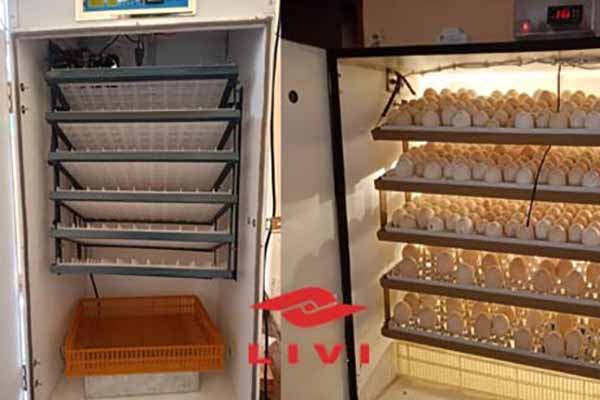Poultry Farm Automation: The Role of Automatic Broiler Breeder Cages
Time : 2025-07-01
Automating processes in a poultry farm is not just a trend; it’s a necessity in today’s competitive agricultural industry. One of the most critical areas where automation can significantly impact efficiency and profitability is in the management of broiler breeder cages. In this article, we delve into the world of poultry farm automation, focusing on the importance and benefits of using automatic broiler breeder cages.
Introduction to Poultry Farm Automation
Poultry farming, traditionally a labor-intensive process, has seen a dramatic shift towards automation. With advancements in technology, farms can now leverage automated systems to improve productivity, reduce labor costs, and enhance animal welfare. Automation in poultry farming encompasses a wide range of processes, from feeding to monitoring and managing breeding cycles.
The Significance of Automatic Broiler Breeder Cages
Automatic broiler breeder cages are a cornerstone of modern poultry farming automation. These specialized cages are designed to house broiler breeders in a way that optimizes their breeding cycles, health, and overall well-being. Let’s explore the key aspects of these cages:
1. Efficient Space Utilization
One of the primary benefits of automatic broiler breeder cages is their ability to maximize space utilization. Traditional cages are often overcrowded, leading to stress and reduced productivity. Automatic cages, on the other hand, are designed to provide ample space for each bird, ensuring comfortable living conditions.
2. Improved Breeding Cycles
The automated nature of these cages allows for precise control over breeding cycles. Features like automatic light and temperature regulation help simulate natural conditions, promoting healthy egg production and hatching rates. This level of control is impossible to achieve with manual systems.
3. Enhanced Animal Welfare
Animal welfare is a crucial aspect of modern poultry farming. Automatic broiler breeder cages are designed to reduce stress and provide a comfortable environment for the birds. Features like automated feeding systems ensure that the birds have access to a balanced diet, further contributing to their overall health.
4. Streamlined Labor Management
Automated systems like broiler breeder cages reduce the need for manual labor, allowing farm managers to focus on other critical tasks. This not only reduces labor costs but also improves overall operational efficiency.
Key Features of Automatic Broiler Breeder Cages
To fully understand the impact of automatic broiler breeder cages, it’s essential to be aware of their key features:
1. Automated Feeding Systems
Automatic feeding systems ensure that birds receive a consistent and balanced diet. These systems can be programmed to deliver feed at specific times, reducing waste and promoting optimal growth.
2. Climate Control
Climate control is vital in poultry farming, as extreme temperatures can lead to health issues and reduced productivity. Automatic cages are equipped with systems that regulate temperature and humidity, creating an optimal environment for the birds.
3. Lighting Management
Lighting plays a crucial role in the breeding cycles of poultry. Automatic cages are designed with lighting systems that mimic natural daylight patterns, promoting healthy egg production and hatching rates.
4. Health Monitoring
Health monitoring features allow farm managers to track the well-being of the birds in real-time. This includes monitoring factors like weight, behavior, and feed consumption, enabling early detection of potential issues.
Implementation and Maintenance of Automatic Broiler Breeder Cages
Implementing automatic broiler breeder cages involves careful planning and execution. Here are some key considerations:
1. System Selection
Choosing the right system for your farm is crucial. Consider factors like capacity, features, and compatibility with your existing infrastructure.
2. Installation
Professional installation is essential to ensure that the system operates effectively. It’s important to follow manufacturer guidelines and best practices.
3. Training
Training staff on how to operate and maintain the automated system is crucial. This ensures that the system is used correctly and efficiently.
4. Regular Maintenance
Regular maintenance is essential to keep the system running smoothly. This includes cleaning, inspecting, and replacing components as needed.
Conclusion
The integration of automatic broiler breeder cages into poultry farming is a testament to the power of automation in modern agriculture. By optimizing space utilization, improving breeding cycles, enhancing animal welfare, and streamlining labor management, these cages play a vital role in increasing efficiency and profitability. As the poultry industry continues to evolve, embracing automation and innovation will be key to staying competitive.












